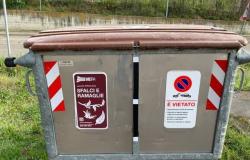The event entitled “Christopher Columbus’s letter to the royals of Spain”, organized by the Lega Navale section of Trani, the Lions Club Ordinamenta Maris Trani and the White Cross, saw a large participation of the public, despite the sultry heat of the day just passed. Elio Loiodice, president of the Lions Club Ordinamenta Maris Trani, and Luigi Ventura, president of the Lega Navale of Trani, opened the evening with words of welcome, and then introduced the speakers Alessandro Moscatelli and Franco Leone.
The lawyer Moscatelli, vice-president of the aforementioned section of the Lions Club, gave rise to a report which highlighted the historical context in which Trani was immersed in the period from the second half of the 15th century to the beginning of the 16th, focusing on the Maritime Statutes, especially through their comparison with the navigation code currently in force. An analysis that underlined the importance of Trani as a point of reference in the Mediterranean, and above all the great modernity of many concepts expressed in this military stone of maritime law, as well as the pride of our history.
Having had Antonio di Maggio’s work on the Maritime Statutes of Trani as his main source, Moscatelli declared that he wanted to try to see the story of Columbus through the eyes of a person from Trani of the same era. There were several passages of great importance, such as the in-depth analysis of some concepts characterizing the ancient Trani code and the similarities present in current maritime regulations; for example: the institution of “throwing into the sea” (lightening the load on board in case of particular difficulties) or the procedures to be followed to deal with “things found at sea”.
Franco Leone, with his eloquence and passion for history and art, which our city had already had the opportunity to appreciate on the occasion of the event on Caravaggio hosted in the church of Ognissanti last December 14th, led the audience in a fascinating space-time journey. Analyzing Columbus’s letter to the Spanish royals of March 1493, Leone retraced his first voyage to the Americas, intertwining history and geography.
Following the Colombian itinerary through the various islands touched by his first expedition, he highlighted how the choice of names assigned by Columbus to the territories on which he landed are a reflection of his profound values: faith, through the names taken from the Christian tradition; gratitude, through the names dedicated to the rulers or other members of the royal family. Also interesting is the constant comparison, for each of the places encountered on the journey, between the description given in the letter and the images of how they are now.
Taking inspiration from some references to the indigenous people, present in the same letter from the Genoese navigator, who would have inspired their representation in Roman art in the following century, the analysis subsequently focused on what is among the major masterpieces of the Bernini school: the “Fountain of the Four Rivers” located in Piazza Navona in Rome.
The evening ended with the recitation of a poem in hendecasyllables written by Franco Leone himself, who paid homage to the sculptures of the fountain, and with the delivery, by the latter, of a copy of the letter to the presidents Ventura and Loiodice .



